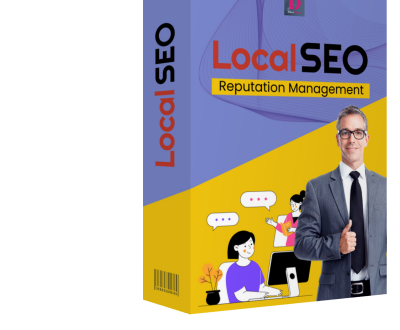11 Best Hot Tips of Content Strategy for SEO
As a marketer, you know that SEO traffic can be extremely valuable to your business. However, developing a content strategy for SEO that resonates with your target audiences’ pain points can be a challenge. If the content strategy for SEO is done right, it produces a competitive advantage over rivals in the industry. There is much content out there that does not generate the desired traffic for goal attainment. Marketers that do not get an impact from their content marketing campaigns have ceased to include it in their digital marketing efforts. Marketers that are getting results from content marketing are not doing it right. Content marketing works if done right. According to the Content Marketing Institute’s digital content marketing stats, about 72% of marketers confirmed that content marketing campaigns have increased their lead generations.
In this blog post, we are going to share 11 top tips on how to develop a content strategy for SEO traffic that focuses on the target audience’s pain points and provides a solution around the lifecycle marketing experience, and distributes for leads with measurable KPIs. The topics on the 11 top tips for developing a content strategy for SEO traffic have been divided into sessions as follows:
- What is Content Strategy for SEO Traffic?
- Content Brief
- Content Audit
- Current Content in relation to Competition
- Keyword Gap Research
- The Target Audience
- Goals Setting with its smart measurable KPIs
- Developing a Content Strategy for SEO Traffic
- Developing new content with its strategic options for implementation
- Content Distribution and Promotional Strategy
- Smart Measurable KPIs

What is Content Strategy for SEO Traffic?
Do you want to increase traffic to your website using the content strategy for SEO traffic? You can do this by developing a content strategy for seo that focuses on your target audience’s pain points and provides solutions around the lifecycle marketing experience. You can then distribute and promote the content for lead generation with measurable KPIs. This should increase traffic to your website. So what is a Content Strategy for SEO traffic? It is a joint initiative with the sole intention to generate leads and conversion from the target audience’s pain points solution around the different segments of the lifecycle marketing experience through distribution and promotion for deeper penetration with measurable KPIs guided to achieve the marketing goals.
Content Brief
If you’re always looking for ways to improve your content whether it’s making sure your blog posts are interesting and informative or planning to develop a content strategy for SEO traffic, one way to meet your goals is to make sure you have a clear understanding of what you want to achieve with it from the beginning. Having a content brief can help you focus your writing and make sure you’re addressing your audience’s pain points with measurable KPIs. Not sure what a content brief is, or how to go about creating one? Keep reading – this blog post will give you all the information you need to get started. The import of having a content brief is to stay within the focus of the goals and prevent a re-write which can be frustrating.
Overview of Content Brief
There is no one way of developing this. It depends on the individual experience and depth of knowledge in content strategy formulation, implementation, and control measurement. My content overview contains:
- Title and the Overviews of the Content
- The Main Purpose of the Content
- The keywords and Recommended Topics
- The Main Questions Readers have Answered?
- Content formats with the Relevant Elements
- Internal and or external links Required
- Other Relevant Resources
Target Audience and the Brand Overview:
- Primary audiences
- Brand Strategic Intent
- A dynamic mix of CTAs relevant to the content types
Visual Content
- The graphics, illustrations, videos, and other visual elements
Miscellaneous:
- Meta description
- Settings (e.g Categories, Tags, Page Templates)
- Word count
- Notes
The content brief would be shared with the project team for input and final agreement to enable everyone to move in the same direction for smooth project formulation and implementation
Content Audit
If you’re like most people who produce content on a regular basis without giving much thought to whether or not it’s actually effective, you should conduct periodically a content audit to help you to succeed in meeting your content marketing goals. A content audit is a thorough analysis of all the content on your website or blog. It helps you determine what’s working and what’s not, identify gaps in your content, and make sure your content is aligned with your overall business goals. While a content audit may sound daunting, it’s actually not that difficult to do. In this post, we’ll walk you through the steps of conducting a content audit so you can improve your content and make sure it’s working hard for you.
A typical content audit should focus on the following:
- Main goal identification.
- Content Inventory.
- Type of data to capture in the inventory
- Use of Content audit tool.
- Set Priorities
Content audit helps you to understand what is working better for the target audience and choose the best method to achieve the set smart goals.
Current Content in relation to Competition
- Identify and keep the current content that is working – driving traffic and in addition to backlinks increment.
- Identify and improve on the content that is performing to expectation, and devise another method of optimization to achieve the desired result.
- In relation to competition drop the content that is not performing with no improvement in sight.
Keyword Gap Research
Now is the time to research the keywords the competition is ranking for, in the search queries that you are not targeting. You can use the keyword search tool to help. Using this tool creates unknown opportunities through the discovery of other unique keywords you can target. This should enrich your content plan.
The Target Audience
It is important that one identify the target audience who are looking for their pain points solution provider at different segments of the lifecycle marketing experience with priority on profitable segments that align to budget spend. One can use the buyer persona to identify content consumers and tailor the content to suit them. Research stats showed that the adoption of buyer personas resulted in to increase in page views per visit by an appreciable percentage and the site visit duration doubled boosting a higher ROI. A dynamic selection of a mix of buyer personas in relation to the content strategy is favored. These are:
- Demographics Persona comprising of age, annual income, gender, family status, location, and level of education.
- Pro status focusing on job title and levels, industry, and the depth of responsibilities
- Psychographics in terms of personal and professional goals, beliefs, and values
- Pain points that cover personal and professional struggles, bottlenecks, Irrationality, rationality, etc.
- Channels of consumption online, influencer’s identification, etc.
- Purchase processes around the customer lifecycle marketing experience.
Goals Setting with its Smart Measurable KPIs
The situational analysis of the brand’s ability to carefully analyzed its market segment and focus on the segment(s) in which it has a competitive advantage over rivals to address the pain points better of the goals. The goals for example are:
- Content tactics should focus on the tone and style preferred by the target audience throughout the select mix of content distribution.
- Increased traffic
- Increased conversion
- Target bottom of the funnel target audience who are ready to buy so as to reduce the cost per conversion.
- Backlinks acquisition
- Social proof earnings
- Use Online PR to gain visibility and presence for a positive image and trust.
- Ensure that the goal-setting is smart and measurable with KPIs.
The Option for Developing a Content Strategy for SEO Traffic
While the industry environment is changing, there is a need to develop optional strategic plans that are reviewed for selection and implementation to meet the attainment of the desired goals. The content strategy for SEO traffic plan should:
- Focus on the situation analysis of the market. Who are we competing with? Is the market still developing or, saturated? What strategies are employed by the industry participants? Identification of the different segments of the customer lifecycle marketing experience and where to focus on.
- The target audience and the identification of their pain points at different segments of the marketing lifecycle marketing experience.
- Content types, distribution channels, and promotional campaign options.
- Industry competitive content marketing strategies and campaigns decisions
- Content topics on social media, the web, and others including scheduling and monitoring of industry campaigns
- The content strategy for SEO traffic adopted and its tactical initiative to achieve the desired goals with the measurable KPIs.
- Social Media Campaign Plan
- Budget approval for the campaign.
Developing new content with its strategic options for implementation
The newly discovered competition keywords and others with great opportunities are classified as transactional, informational, and navigational to enable us to know the search intent. From this, one should now develop a 5000-word topic guide within the content framework that includes the primary keyword, secondary keyword, title, and meta description.
Content Distribution and Promotional Strategy
If you spend so much energy creating the content, it is only wise to spend more on distribution and promotion. There are several options available. A select mix fit to match the nature of the content is advised. These are:
- social media spread
- influencer penetration
- Paid ads on social media
- Earned and owned media
- Email marketing campaign
- Online PR
- Podcasting
- Video
- eBook
- Case study
- Report
- Slideshare
Smart Measurable KPIs
Now is the time to march the set smart goals with the KPIs to know how far one is within the goal attainment on a monthly basis and consistently make changes to strategy, and content improvement through updates.
For your next project, let’s create your content strategy for SEO traffic. Let’s talk.
Published July 9, 2022, by Adebola Adeola CEO Dinet Comms
- Content Strategy And Content Marketing, Content Strategy And Planning, Content Strategy Checklist, Content Strategy Ideas, Content Strategy In Digital Marketing, Content Strategy Is The Answer Of Why, Content Strategy Meaning, Content Strategy Objectives, Content Strategy Objectives Examples, Content Strategy Outline, Content Strategy Sample, Content Strategy Seo, Content Strategy Skills, Content Strategy Statistics, Content Strategy Steps, Content Strategy Tips, Content Strategy What Is It
About us and this blog
We are a digital marketing company with a focus on helping our customers achieve great results across several key areas.
Request a free quote
We offer professional SEO services that help websites increase their organic search score drastically in order to compete for the highest rankings even when it comes to highly competitive keywords.
Subscribe to our newsletter!
More from our blog
See all postsRecent Posts
- Developing Web Applications for Niche Markets February 27, 2023
- Martial Arts! Discover 361 Best Training Camps October 17, 2022
- Surf Camp! Discover the Finest 500+ Surf Spots October 7, 2022





